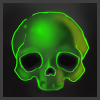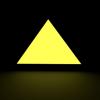P.S. Just to clarify, I am not looking for tutorials on how to draw, I am looking for tutorials on the process of making art for mobile and other 2D games, like what tools to use, what to keep in mind, how to create the art assets from scratch etc..
Then in fact you are looking for tutorials on how to draw, as loading the art into a engine is very easy and if you are using a pre-made engine it's only easier.
First the engines:
Cocos2d for a power full 2D engine, it's a bit hard to learn but it's probably the most advanced 2D engine, it's open source and that is a huge plus in my book.
GameMaker is second on my list as it is a easy to use engine even for beginners, however the free license leaves a lot to be desired.
Unreal and Unity is also a option, although they are 3D game engines with 2D game compatibility; the 3D tools does allow for some nice effects.
Both Unreal and Unity is free with terms.
As for loading the images in you should Google "How to load sprites into (engine name here)"
Next the API:
If you plan on not using a pre-made engine and even then you will need to learn an API as it is they that actually do the rendering for an engine. The two most used are OpenGL(Vulkan) and DirectX. For mobile games you will probably be using OpenGL(Vulkan) even if your engine supports both.
Tip: even a 2D image is rendered on a polygon(a 2D plane that is used to make 3D meshes) and many 2D game developers can't understand why their games run at 15fps when it's just a 2D game; if this happens just research how to batch meshes, Cocos2d does batching and the 3D engines will do it for you.
The art:
For 2D art you will mostly produce two kinds of resources sprites and sprite-sheets.
Sprites is a simple 2D image, most of your environment will be sprites. Sprite-Sheets, this is a sequence of sprites on one image, only part of the sprite sheet is rendered and when animating each sequence sprite is rendered(This is done by moving the UV of the polygon used to draw the sprite).
Tip: It is important to know that sprites perform best when they are square powers of two(8*8, 16*16, 32*32, 64*64...), even when making sprite sheets you should keep this in mind. Only the sprite sheet needs to be a square power of two, the images on it can be strange.
Learning art:
http://www.ctrlpaint.com/ learn drawing and digital painting.
http://www.deviantart.com/ find inspiration and useful tutorials.
Tip: learn about art, there is in fact a very technical side to it. Don't be afraid of using guides when drawing.
Software for making 2D art:
Photoshop or Gimp or both if you want, for your pixel needs.(Gimp is the free one)
Krita, for digital painting, the brushes are amazing.
Inkscape for vector art. Gimp, Krita and Phothoshop can do vector, however they aren't vector focused.
Any 2D animation software(Spine 2d) or Any 3D animation software (Blender); It's easy to make 2D assets with 3D software.
Tip: Pick the software you want to work with, you don't need all of them in fact you could do it all with only one of these.







